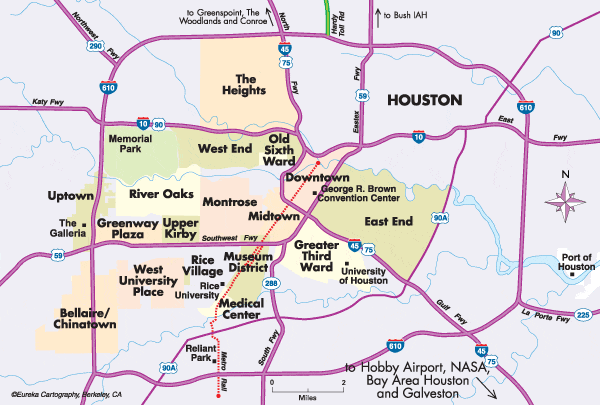Houston is commonly understood as a sprawling mass of neighborhoods lacking zoning and any organization whatsoever. This is not completely true, but Houston has a geography unlike any other major city in the United States.
“Houston is […] [c]orrectly perceived and publicized as a freeway city, mobile city, space city, strip city, and spectator city, it is being dissected […]
But what strikes the visitor accustomed to cities shaped by rivers, mountains, and distinguishing topography, by local identity and historical and cultural conditioning, is that this is instant city and it is a nowhere city.
Houston is totally without the normal rationales of geography and evolutionary social growth that have traditionally created urban centers and cultures” – Ada Louise Huxtable
We read extensively on topics of place in the Literary Houston class and asked ourselves critical questions about Houston. What makes a place in Houston? Is Houston really a place of nothingness? Were authors missing the value of “negative” space?
“No, what makes Houston so peculiar itself is the alternations between being and nothingness. Driving around Houston, one grows conscious of that rhythm of negative and positive space, the lacunae, the gaps between the teeth, the no-man’s-land of vacant lots” – Phillip Lopate
To read the white papers on this topic, click on one of the following titles:
Hurricane Harvey, Houston Teen Arts, and an Operative Theory of Anti-Capitalist Space by Jacob Tate
Semantic Richness in Houston’s Negative Spaces: Bryan Washington’s Lot by Chaney Hill
Lot and the Idiosyncrasies of Queer Space by Rebecca Noel
Mapping Decolonial Conceptions of Queer Identity and Place in Lot by Sarah Swackhamer

